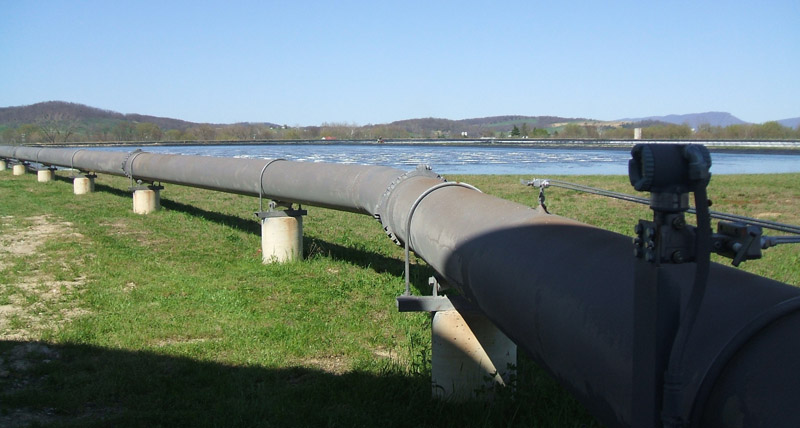
Courtesy of the Virginia Municipal League
Appendix 13
Public Works
Another vital (and often taken for granted) area of local government services is generally identified under the heading of public works. Such services include:
The delivery of a safe, abundant, secure, and affordable supply of water is a vital public service. However, it also entails one of the most complex and highly regulated service delivery systems in the United States. According to the American Public Works Association, there are more than 54,000 community drinking water systems in the United States.
The water system infrastructure consists of a distribution system that transports water from its source (groundwater or surface water) to homes and businesses for use. The water may be pumped /stored in reservoirs, chlorinated, and fluoridated before being transported through a system of water mains to fire hydrants, homes and businesses. The safety of a community water system is the highest priority for local governments. The federal Safe Drinking Water Act of 1974 empowered the U.S. Environmental Protection Agency (EPA) to establish national standards for drinking water safety and to oversee attainment of those standards. Water retailers are required to annually provide all customers with a consumer confidence report on the quality of water delivered over the past year.
Water pipleline Courtesy of the Virginia Municipal League |
Like drinking water, wastewater or sewage treatment is a basic but vital service. Many small and rural communities still rely on private septic systems to process water, but today the majority of the U.S. population is served by wastewater treatment facilities. Wastewater flows from homes and businesses, often through a complex system of both private and publicly-owned mains, to a wastewater treatment facility. Some systems are gravity operated; others require pumping of lift stations to transport the sewage to the treatment facility.
Waste water treatment facility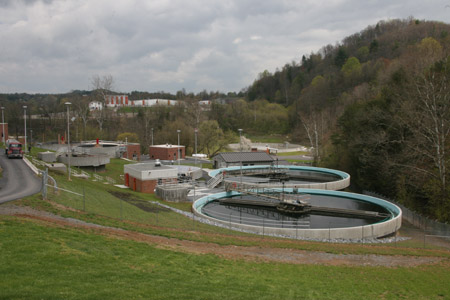 Courtesy of the Virginia Municipal League |
Sewage construction 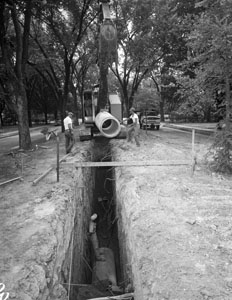 Courtesy of the Library of Virginia |
Some local governments also operate their own electric and/or natural gas distribution systems.
Local government utilities are usually organized into separate enterprise funds with customer fees covering all the operating and capital costs to provide the service.
The collection, retention, and treatment of storm water is also an important responsibility of local government. The management of storm water systems helps reduce flooding and the run-off of pollution into surface water bodies such as streams, rivers, and the Chesapeake Bay. Federal and state laws are placing ever more stringent requirements on these systems.
For solid-waste collection, recycling, and disposal, communities have a number of service models to choose from. For smaller communities, contracting some, if not all, of the solid-waste program is increasingly attractive because of the costs associated with the collection and separation of recycled materials, as well as the regulatory cost of operating a public landfill. Services can be privatized through a franchise agreement or contract. Communities can also join together through a collaborative structure to provide the service and achieve operational efficiencies and economies of scale.
The construction and maintenance of streets is a shared responsibility in the Commonwealth with federal, state, and local government. Federal and state highway systems are overseen by their respective levels of government; however, local governments play an increasing role in the planning, construction, and maintenance of these facilities within their community. Cities in Virginia generally have primary responsibility for the construction of new roads and the maintenance of existing facilities within their corporate limits. The Commonwealth plays a more direct role for roads and streets within counties and towns with populations of less than 3,500.
Bridge Construction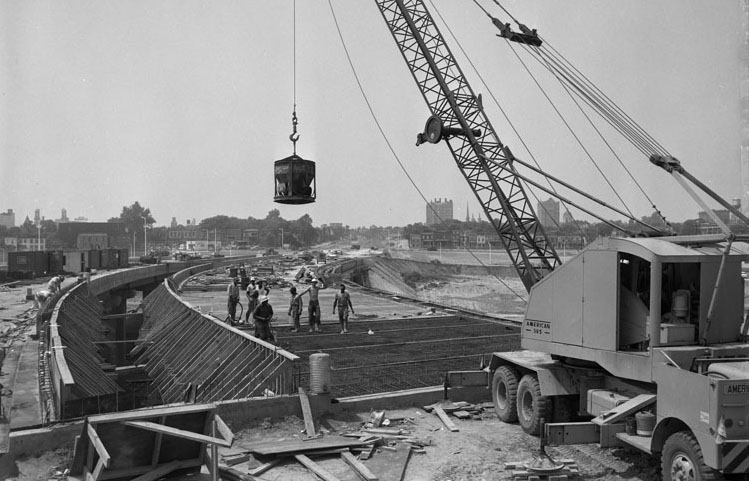 Courtesy of the Library of Virginia |
Pavement maintenance consists of sealing cracks, repairing potholes, and patching roads to prevent water from penetrating the street surface and accelerating the deterioration process. These ongoing activities are supported by periodic street overlay projects (chip seal, slurry seal, or asphalt overlay).
Street Maintenance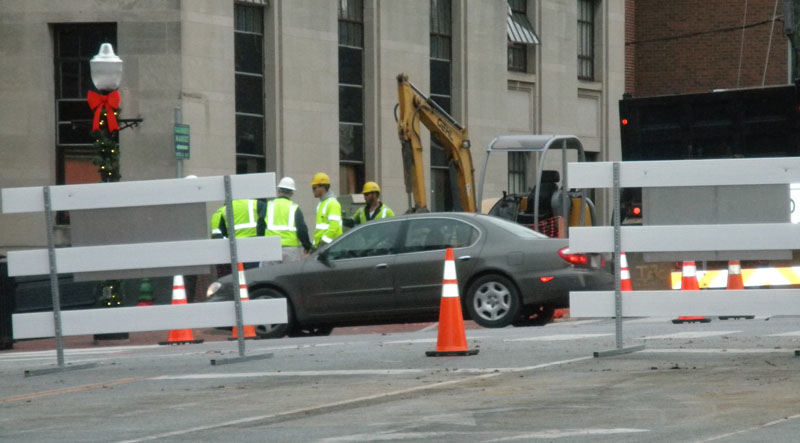 Courtesy of David Hicks |
Public transportation is another growing area of service provided by many Virginia local governments. Public transportation is provided as a way to help reduce traffic congestion and pollution, and to provide mobility for citizens who do not have access to private and accessible transportation. Public transit systems include buses, light rail, rapid transit (subways and metro), trolleys, and ferries. The majority of funding for mass transit capital and operations comes in the form of flow-through money from the federal and state government.
Many local governments, usually through regional partnerships, provide support for local air service for commercial passengers and private aircraft for business and recreation.
Public Works departments are usually charged with the responsibility of cleaning and maintaining all public buildings and maintaining and repairing public vehicles and equipment.